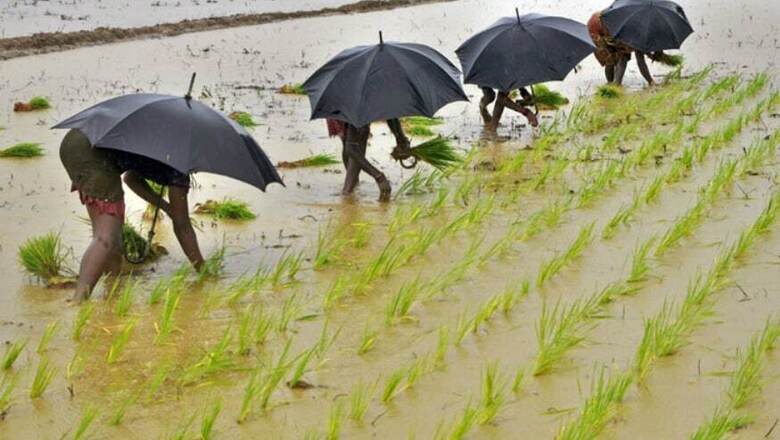
views
New Delhi: The country's foodgrains production is estimated slightly lower at 140.57 million tonnes in the kharif season of 2019-20 crop year on likely fall in rice and pulses output, according to a latest data released by the Agriculture Ministry.
Foodgrains production stood at 141.71 million tonnes (MT) in the kharif season of the 2018-19 crop year (July-June). Sowing of the kharif (summer) crops is almost complete and harvesting will begin from October onwards.
Rice, pulses and coarse cereals comprise of the foodgrain basket. The ministry releases four estimates at different stages of production and harvest.
As per the first estimate, rice output has been pegged at 100.35 million tonnes for the kharif season of the 2019-20 crop year, lower than 102.13 million tonnes in the year-ago period. Pulses production has been estimated to be lower at 8.23 million tonnes as against 8.59 million tonnes.
The production of coarse cereals, however, has been estimated higher at 32 million tonnes in the kharif season of this year from 30.99 million tonnes in the same season previous year.
Among cash crops, cotton output has been pegged at 32.27 million bales of 170 kg each for the 2019-20 crop year, similar to 32.26 million bales achieved in the previous year.
Jute output has been estimated at 9.96 million bales of 180 kg each as against 9.95 million bales in the previous year.
Even sugarcane production has been pegged at 377.7 million tonnes for the current year, similar to what was achieved last year.
The India Meteorological Department (IMD) had predicted a normal monsoon. There was a delay in the onset of southwest monsoon but later it picked up. However, states like Karnataka, Kerala, Gujarat, Bihar, Assam, and Maharasthra are hit by floods due to heavy rains that have impacted kharif crops.
Monsoon rains up to mid-September has been 4 per cent, higher than Long Period Average (LPA), the ministry said. Production of most of the crops for the agricultural year 2019-20 has been estimated higher than their normal production. However, these estimates would undergo revision based on further feedback from the states.



















Comments
0 comment